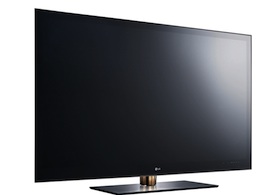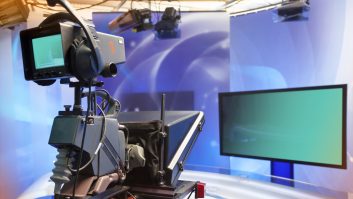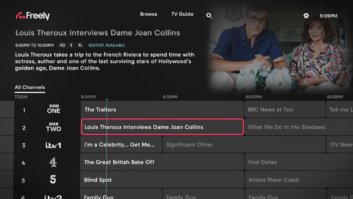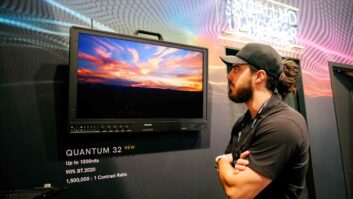
LG Electronics has demonstrated the world’s first autostereoscopic (glasses free) 3D mobile broadcast over ATSC-M/H, the US equivalent of the DVB-H standard, at the Consumer Electronics Show in Las Vegas, writes Adrian Pennington.
The company has pumped more than $12bn into R+D – its biggest investment ever – with much of it designed to place the company at the forefront of 3D screens.
“3D very important to LG,” said Dr Skott Ahn, the company’s President and CTO. “In particular we see tremendous growth potential in the 3D mobile display market.”
The live 3D mobile demonstration was delivered on a 4.3-inch glasses-free 3D display (slightly smaller than the 72-inch LZ9700 pictured). Featuring a WVGA touchscreen and 480×800 pixel resolution the display uses an applied parallax barrier technology, which delivers a series of light-blocking slits attached to the front of the LCD panel. The slits, or barriers, ensure that the left and right eyes see different images, creating an illusion of depth.
LG’s swathe of 3D enhanced product include a premium Blu-ray 3D disc home theatre system; a network Blu-ray 3D disc player; and a 3DTV product line bundled with four pairs of lightweight 3D glasses which LG says will cost consumer’s less than $20.
These are substantially less than rival 3D glasses which can cost up to $150 and are seen as a barrier to take-up in the home. The Cinema 3D glasses are passive and polarized and use a Film Patterned Retarder (FPR) to optimise the separation of images for the left and right eye.
LG’s 3D Light Boost, a thin film covering the screen is said to create bright, crisp 3D images by counteracting the dimness that can occur with 3D content.
“We’re introducing a simple 3D solution that allows consumers to enjoy 3D without barriers,” said Jay Vandebree, senior VP, LG Electronics USA. “Affordable glasses allow for group viewing, eliminate the worry of losing or breaking glasses and never need charging, while wide angle viewing allows consumers to enjoy movies and sports from virtually anywhere in the room.”
Four of LG’s new plasma 3DTV series incorporate 3D capability, working with active shutter glasses and an RF emitter built into the television. They also incorporate 2D to 3D conversion, which is user-adjustable so consumers can watch almost anything with a 3D effect.
LG is also showed a prototype of its future range including a 31-inch 3D OLED screen and an autostereoscopic 3DTV.
LG’s mammoth collection of press releases from Vegas can be found in its CES Newsroom.







